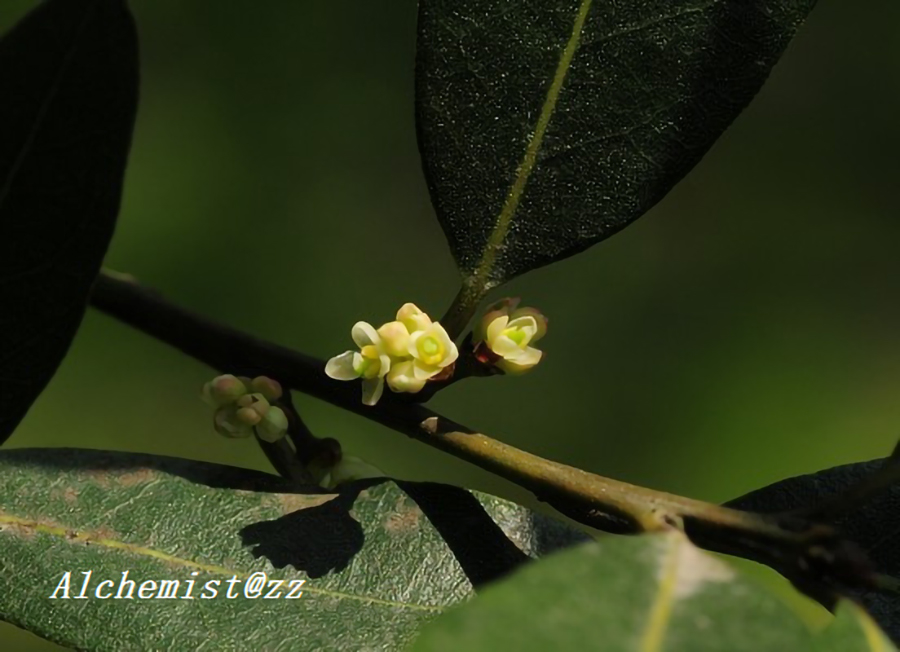- Scientific Name: Laurus nobilis L.
- Ref: Sp. Pl.:369. 1753
- English Common Name: laurel tree, bay laurel, sweet bay, true laurel, Grecian laurel
- Chinese Common Name: 月桂 yuèguì
- Japanese Common Name: ゲッケイジュ [月桂樹] gekkeiju
- Family: Lauraceae
- Genus: Laurus
- Distribution: native to Mediterranean region, cultivated S China.
- Photo: 04/04/2013
Evergreen shrublike or small trees, up to 12 m tall, dioecious. Bark blackish brown. Branchlets terete, striate, puberulent on young part or wholly subglabrous. Leaves alternate; petiole purple-red when fresh, 0.7-1 cm, sparsely puberulent or subglabrous, sulcate adaxially; leaf blade greenish abaxially, dark green adaxially, oblong or oblong-lanceolate, 5.5-12 × 1.8-3.2 cm, leathery, glabrous on both surfaces, lateral veins 10-12 pairs, curved and interconnected at ends near leaf margin, midrib elevated on both surfaces, reticulate veinlets ± conspicuous on both surfaces, foveolate, base cuneate, margin slightly undulate, apex acute or acuminate. Umbels 1-3 in cluster on short raceme, globose; involucral bracts suborbicular, glabrous outside, sericeous inside; peduncle up to 7 mm, sparsely puberulent or subglabrous. Male flowers 5 in each umbel, green, small; pedicels ca. 2 mm, pilose; perianth tube short, densely pilose outside; perianth lobes 4, broadly obovate or suborbicular, appressed villous on both surfaces; fertile stamens usually 12, in 3 whorls; filaments of 1st whorl eglandular but those of 2nd and 3rd whorls each with 2 reniform glands at middle part; anthers ellipsoid, 2-celled, cells introrse; ovary infertile. Female flowers: staminodes 4; ovary 1-celled; style short; stigma slightly dilated, obtusely trigonous. Fruit dark purple when mature, ovoid. Fl. Mar-May, fr. Jun-Sep. (Flora of China)
